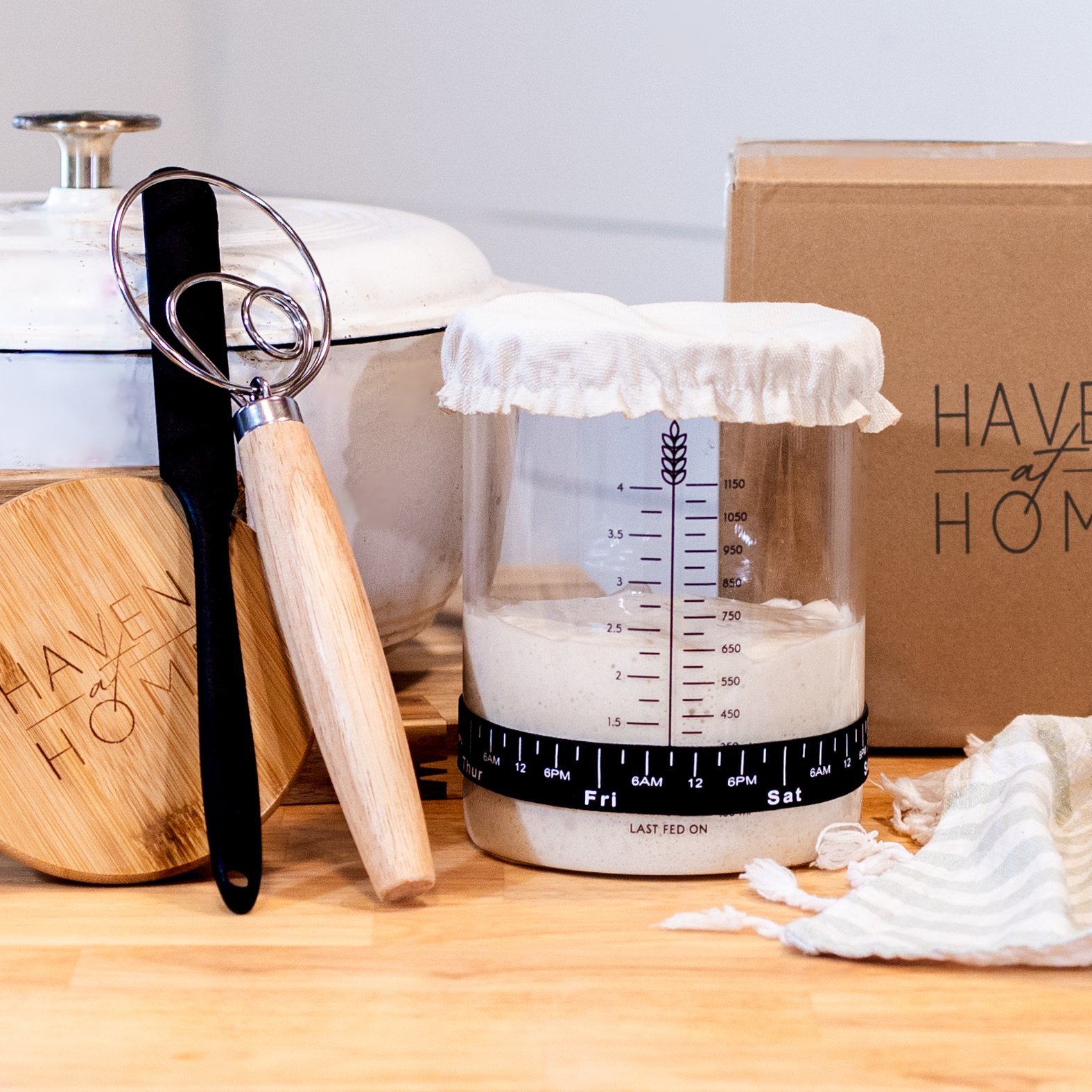What is Sourdough Starter?
Everyone seems to be talking about sourdough these days - and for good reason! Sourdough is a simple, healthy bread that is formed by flour, water and bacteria from your environment.
A sourdough starter is a live active culture made from water and fermented flour that is full of beneficial bacteria and yeasts.
It is used as a way to ferment recipes and make bread rise naturally without using commercial yeast.
When making bread, there has to be a leavening agent to make the bread rise. Nowadays, most breads are made using commercial yeast and other baked goods often use baking powder or baking soda. Ultimately, bread needs to rise - or it’s an unleavened blob of dough. Sourdough starter replaces the need for commercial yeast, baking powder or baking soda and is formed by combining flour and water and allowing it to ferment and grow a healthy little bacteria colony that’s derived from your environment.
Making A Sourdough Starter
You can purchase pre-made active starters, dehydrated active starters or you can make your own! It can feel really overwhelming at first, but the process is fairly simple once you get the hang of it. Here’s how forming a starter from scratch looks:
flour + water + bacteria culture collected from your environment = sourdough starter
We hear the word “bacteria” and instantly think, “ew,” but the bacteria cultures found in sourdough starter is a colony of good bacteria that’s fed and fermented during the rising process by using microbes from the flour, your hands, the air around you and probably even the utensil that you use to stir it. Without giving an entire science lesson (you can find a great one here) on sourdough, the important part is that it’s better for you in that it’s digested easier than other breads because of the fermentation process, it has far fewer ingredients (and no preservatives or additives!) and it’s fairly simple to make once you get the hang of it.
Back to making the starter:
Basically, here’s how it goes: mix equal parts water and flour in a jar and wait. After a bit, take some of the mixture out and discard it; stir in more flour and water and wait some more. After repeating this process over and over, you’ll produce a happy, bubbly mixture that rises when it’s “feeding” and falls when it’s “hungry.” Kind of like a toddler, ya know?!
Over time, this process will strengthen the starter and form a colony of bacteria and yeast that leaven the bread and causes it to rise. After your starter is established, you’ll watch it rise and fall on the counter - this is the same thing it will do in the oven. Well, except the falling part. It shouldn’t fall, but it will rise!
Learn how to make your own starter here.


